If you don’t promote a product, especially a new one, they probably won’t gain much attention.
Because According to Harvard Business School some 30,000 new consumer products are released annually. But as many as 95% of those products will fail to make significant sales.
Promotional failures can be because of product quality all the way to its perception. Kind of like Lifesavers’ attempt at creating branded soda.
It tasted great but people who hadn’t tasted it thought they would be drinking liquid candy.
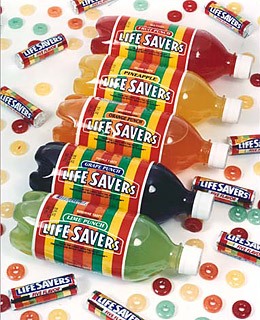
Still there are plenty of cases where a product has no flaws and is a perfect fit for customers but fails. It usually comes down to poor product promotion.
But getting a product in front of customers is easy – it’s getting it in front of the right ones that can be a challenge.
So are you selling a product? Or are you preparing to market a new product?
Then you can use these 20 proven tactics to market a product:
- Email Marketing
- Press Mentions
- Source User Generated Content
- Work with An Influencer
- Create a Featured Video
- Direct Mail
- Trade Shows and Conventions
- Create a Pre-order Promotion
- Leverage a Loyalty Program
- Custom Audiences with Facebook Ads
- Tell Your Product Story
- Promote Your Products with Pinterest
- Write Guest Posts
- Use Eye-Catching Visual Media
- Use Social Posts to Generate Engagement
- Create Product Inserts
- Use Product Recommendations
- Create Gift Guides
- Sell More with Social Proof
- Promote and Sell in Multiple Marketplaces
1. Email marketing
Understand that your customers want to hear from you, that’s why they subscribe to your list. According to a study by MarketingSherpa, 72% of consumers prefer email over all other types of communication.
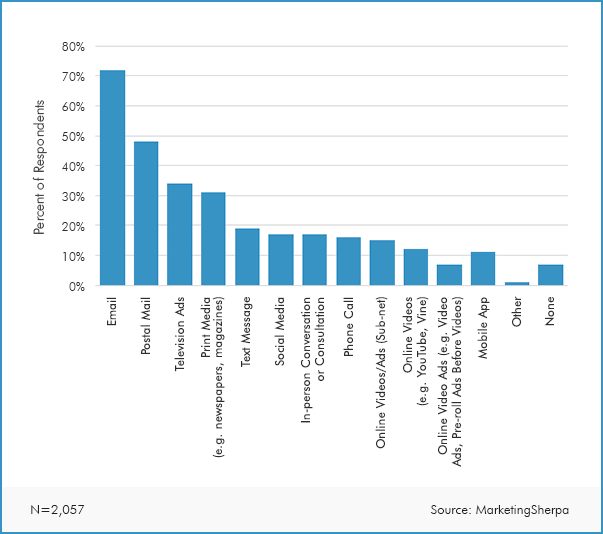
But not all subscribers want to hear from you all the time. In fact, 74% of consumers are frustrated when they receive an email they are not interested in.
And that can lead to dropped subscriptions and lost customers. Still, email marketing is one of the most affordable ways to promote a product with rapid returns.
But only when you’re communicating with the right customers. So avoid sending email blasts to your entire list. Instead, trust your data to target the right customers. Be sure to verify your email list to ensure high deliverability with your email marketing campaigns.
And segment your email lists to find the subscribers who are most likely interested in your promotion.
According to Campaign Monitor, targeted emails can generate as much as a 760% increase in revenue. And more than 76% of marketers say basic segmentation is part of their email marketing strategy.
Now there are a bunch of ways segment your subscriber lists; So focus on what fits the best with the product you’re promoting:
- Previous purchase behavior (such as similar product purchases)
- List engagement with earlier promotions
- Interests
- Demographics
And for eCommerce stores, you should also consider adjusting your abandoned cart emails. So instead of showing them only what they left in their cart include recommended products .
Show them the product you’re promoting with messaging like “would you also be more interested in this?”
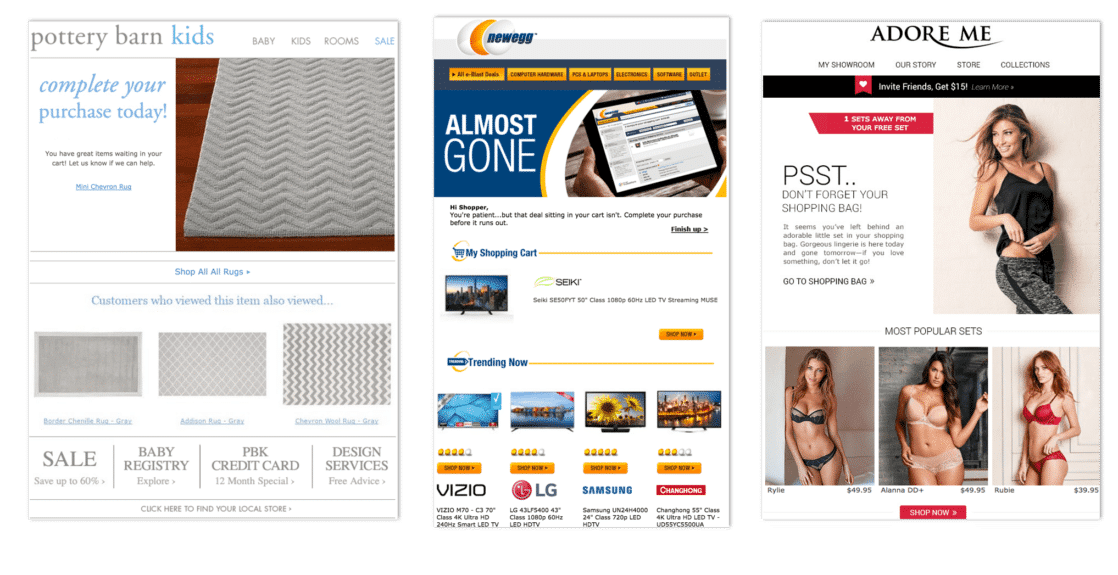
And you’ll be promoting to a smaller audience with segmented emails. So those who get your emails are far more likely to click through and make a purchase.
2. Chase Down Press Mentions
Brands frequently drop press releases with new product launches and promotions. So these can be a great way to generate press.
But the downside is that journalists have hundreds of press releases cross their front desk daily.
And a press release service like PRWeb (Cision) is a smart tool, but it shouldn’t be your sole means for press outreach.
In addition to a PR distribution service, find press coverage of similar products. And with a press release in hand, reach out to those journalists and bloggers with a personalized pitch.
And reference their coverage of a similar product, share your own product with them, and ask them to cover your own.
3. Source User Generated Content
Now one of the best ways to promote a product, especially a new one, is to let your customers speak for you. People are far more likely to sign on to try a new product if they see great reviews or the product being used.
Simply put: reviews influence shopping behavior
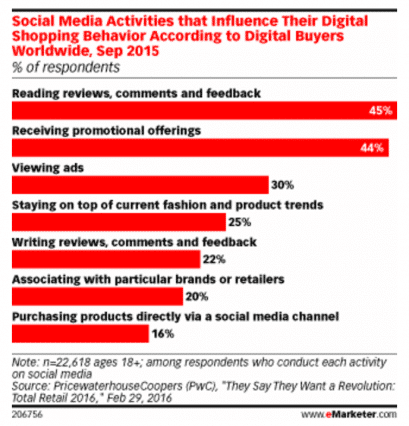
Peep Laja with ConversionXL shared that 73% of consumer purchase decisions start with online research. And as much as 88% of customers trust online reviews as much as personal recommendations.
Therefore you can use this to market your products by linking up with your best customers and asking them to leave reviews. Or, even better, share videos and images that include your product.
Plenty of customers are willing to share this type of content in exchange for discounts and free products.
And you can even offer early access to new products. Your biggest brand ambassadors may be willing to do this in exchange for nothing at all.
So once you’ve got that user generated content you can start sharing it across social channels. And this includes email communications, product pages,ads, and anywhere else it could get attention.
4. Work with An Influencer
At the Social Intelligence Summit in Las Vegas Penny Baldwin, CMO at McAfee, said: “80% of the Internet’s impressions are driven by just 6% of its users.”
But it’s not easy to promote your products when you’re a startup without an audience. So if your reach is limited, then tap into those who have a much larger audience.
Use larger channels to start building your own while promoting your product.
Reviews from influencers in your niche can dramatically improve reach and generate instant social proof with your target audience.
And as high as 59% of consumers base purchase decisions on recommendations from people they know and trust. like influencers.
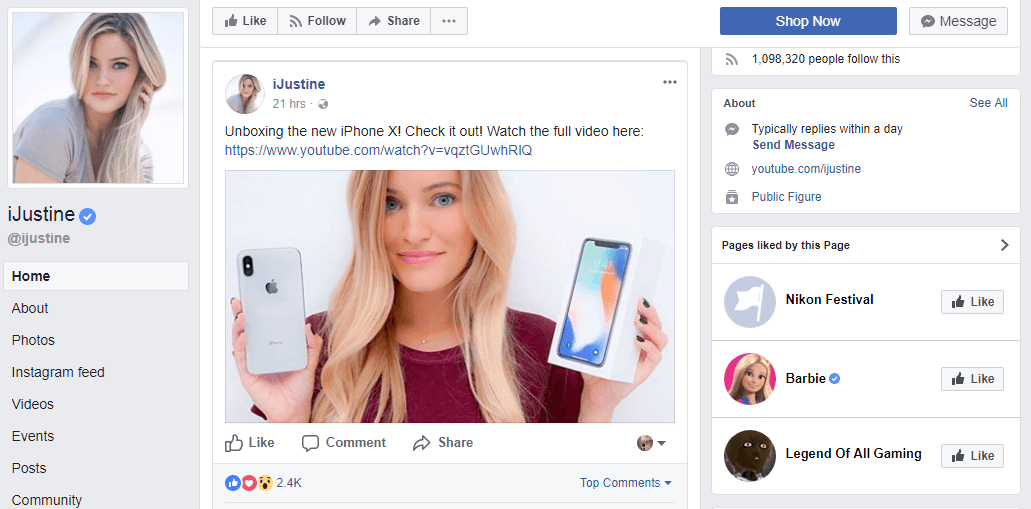
Now some influencers may be willing to sell and promote your products in exchange for free units. While others may require payment to advertise a product for you. In either case, the ROI is substantial and worth the investment.
Convince and Convert shared the results of Silk Almond Milk running an influencer campaign. And it shows how influencer marketing blows traditional and digital advertising out of the water:
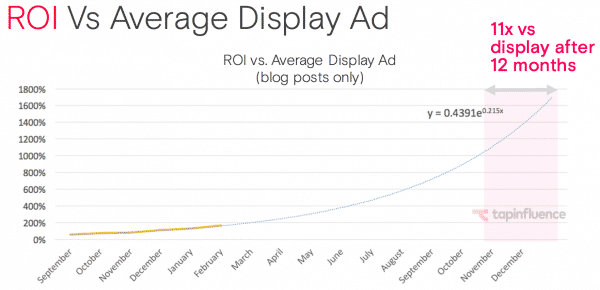
- Households exposed to influencer marketing purchased 10% more Silk products than the control group.
- Each 1000 people viewing influencer marketing purchased $285 worth of Silk products over the control group.
- The ROI of the blog posts alone (not including social promotion) is 11X the ROI of banner ads, after 12 months.
5. Create a Featured Video
Look, you don’t have to rely on customers to create videos for you. Any product promotion should have video included as part of a promotion and content marketing strategy.
And you don’t need a huge production budget to create videos.
So with a $30 camera mount or tripod, a little time, and a smartphone you can create videos that sell a product effectively by telling a story.
You don’t need anything professionally scripted, just grab your product and put something together with a focus on value.
Now here’s a great example from Mancrates:
It might look professional but it’s a simple video that didn’t require a lot of production. The video is entertaining, and tells a fun story about the product.
Now value is the key. And the goal is to advertise your products, but your customers don’t really care about the product. They care about the value and what it can do for them and the problem it solves, etc.
With that in mind, you can create simple videos like:
- A product how-to that shows the benefits of the product, the problem it solves, and how it solves the problem
- Unboxing videos that show the benefits of the product
- Behind-the-scenes videos showing the product history and how it was made, and why it was made
6. Attention Grabbing Direct Mail
Direct mail might not be cheap, especially for a startup with a small marketing budget. But it can be an effective tool for promoting a product when done with a strategy.
And you can also do it on a small budget. Because traditionally blasting entire zip codes with postcards, costs thousands of dollars. So think smaller in the same vein as segmented email marketing.
Here are a few ways to can market your product with direct mail on a limited budget:
- Send letters or cards to select customers with purchase behaviors that align with the new product.
- Send thank you letters to customers with a discount offer on the new product after they’ve made a different purchase.
- Try a mailing service like Valpak to get your product promo and special offer into more homes for substantially less. (QuickBooks highlighted several case studies showing substantial ROI)
Truthfully direct mail isn’t for everyone. And it’s important to consider the cost, potential return (including the lifetime value of your customers according to your lifecycle marketing strategy), and your profit margins.
7. Trade Shows and Conventions
Now trade shows and expos can be a great way to get a lot of eyes on your product all at once. And for new product launches you can provide early access and pre-launch purchases at an event.
Or you can even use the event as a launch point for your new product.
While all events will have costs involved (table fees, shipping products, signage, travel costs, etc.) you can find local or regional events to reduce your costs.
And in some cases, a larger event with tons of foot traffic can be worth the investment.

In addition to selling and promoting your product, you’ll be able to capture information from show attendees. So use this information to follow up after an event if you weren’t able to close a sale in person.
8. Create a Pre-order Promotion
For businesses with a growing audience you can use a pre-order promotion to start building buzz before you release your product. This is a great way to tie together a countdown to launch across social channels.
Brands frequently offer perks for pre-orders to get more purchases as well. And this can include discounts on the purchase or items only available to people who pre-orders at no additional cost.
The gaming industry has successfully used this tactic in video-game pre-orders. And they use exclusive items to generate large pre-order sales while also generating earned media around product launches.
Bethesda’s upcoming title, Fallout 76, launched a pre-order campaign . Not only do they provide early beta access to the game before launch,bBut they also offered a limited number of pre-order exclusives.
And it included a collector’s edition with bonus items including a power armor helmet from the game. Also with pre-orders you know exactly how many sales you’re going to have before sourcing a new product.
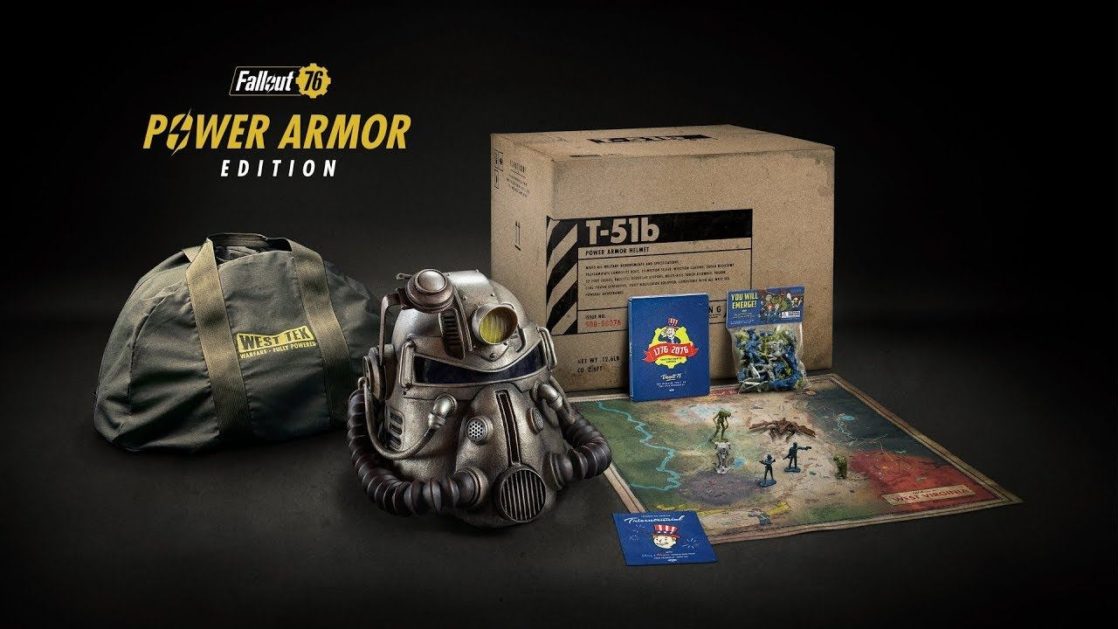
Exclusives included in a pre-order is a great way to generate earned media and a ton of social shares from your existing customers and brand ambassadors.
9. Create a Loyalty Program
Loyalty programs improve lifetime customer value, generate more repeat purchases, and even improve average order value.
They can also be used to easily promote new products or specific products.
Here’s a few ways to do that:
- Reach out to your most loyal customers with special promotions on your product.
- Showcase a discount on your product page specific to loyalty program participants.
- Email program members encouraging point use on a specific product.
- Offer double point value on redemption for a specific product purchase.
- Offer double point gains when purchasing the promoted product.
And if you don’t have a loyalty program then now is the perfect time to get one set up. You can introduce your new loyalty program alongside the product you want to promote.
You can offer double points or other perks when signing up for your program with the purchase of the product.
10. Use Custom Audiences with Facebook Ads
Ideally you want to use the most cost-effective methods to promote a product. Therefore, paid campaigns can generate a significant ROI. But many marketers have launched ad campaigns and made zero profit.
The key is in the audience targeting.
Like organizing your email lists, the tighter your audience targeting is the better your results. You’ll reach a much smaller audience but those who see your ad are far more likely to buy something.
Facebook’s custom audience tool offers unlimited targeting combinations and there are some easy ways to ‘hack’ your ads for more effective targeting.
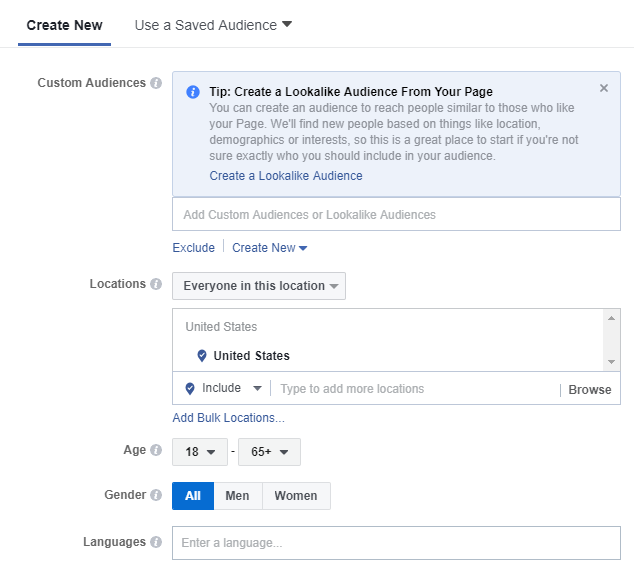
Rather than clicking through behaviors and demographics to build an audience. Upload a customer list or email subscriber list to build a lookalike audience closely matching your customers.
You can also use a Facebook Pixel to create custom audiences and do some seriously effective remarketing campaigns based on customer behavior. This includes targeting people based on:
- Specific pages they visited on your website.
- Purchase events and past purchase behaviors.
- Time spent on your site or certain pages.
- Content they read or downloaded.
- Account registrations on your site.
- Products they viewed or added to the cart.
- Search queries.
- Lead form or opt-in completions.
- Most active customers or least active customers.
- Video engagement (like how much of a video they watched)
- Facebook page engagement.
There are many ways to create custom audiences to ensure your ads have the most impact. So save your audiences and continue to tweak them for future ads.
The biggest benefit to custom audiences is creating ads that are far more relevant to the specific audience.
As your relevance score increases (to a max of 10) the more exposure and click through you’ll see while also experiencing a significant drop in cost per click.
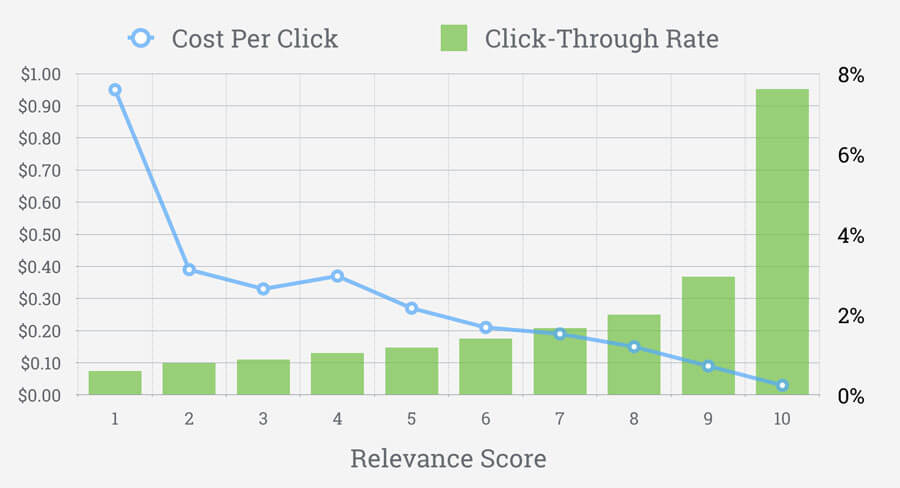
11. Tell Your Product Story
Too many marketers fall into the trap of trying to sell a product and not the experience. The truth is customers don’t care about your product.
All they care about the solution to their problem.
So when you tell a story – a good one – you engage a completely different section of the customer’s brain. A detailed story, including emotion and the senses, engages the whole of the customer’s brain.
A 2012 New York Times article sums up research by cognitive scientist Veronique Boulenger (and many others) which all conclude that the human brain:
“…does not make much of a distinction between reading about an experience and encountering it in real life; in each case, the same neurological regions are stimulated.”
It doesn’t take much to tell a story. So focus on the benefits of the product, the values of the audience, problems they have, and how they relate to the product.
One example of clever storytelling is Zendesk Alternative.

“Instead of creating a video to tell the story of Zendesk, they crafted an entertaining video about Zendesk Alternative,” writes Michael Brenner, CEO of Marketing Insider Group.
“A fictional indie rock band, frustrated that a customer support company ‘stole’ their band name, yet admitting their need for Zendesk’s services to keep their careers going.
To finish this masterful example off beautifully, the band writes a cheesy jingle about the importance of customer service.”
Instagram Stories
Honestly, you don’t have to create an entire website for effective storytelling though. Start small using Instagram Stories.
Every social channel offers the opportunity to post video. But few make it easy for you to tell the story of your product while converting the viewer into a customer.
And at the end of an Instagram Story users can swipe up and be sent directly to a product or landing page.
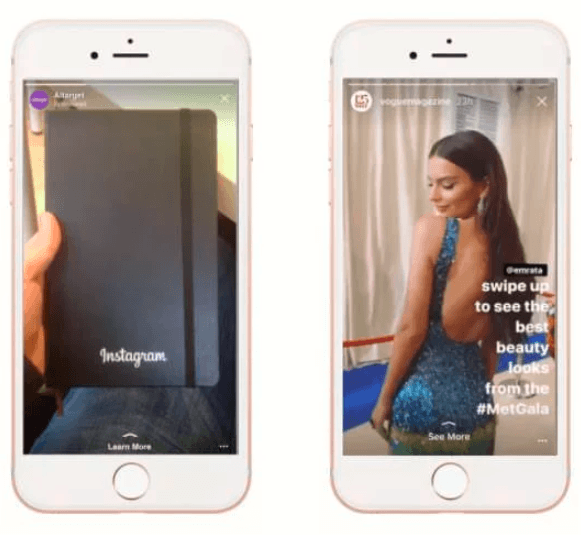
So Instagram Stories are a great way to naturally advertise a product with storytelling. Especially if you have a growing Instagram following or working with Influencers who can share the content to a larger audience.
12. Promote a Product Through Pinterest
While Pinterest is primarily a social sharing community, it can be an great tool for promoting products.
With the addition of promoted pins, which look like regular pinned content, you can reach a target audience likely to be interested in your products.
There’s another way to use Pinterest to market your online business without purchasing ads.
With optimized Pinterest boards.
You may have seen Pinterest boards show up when doing other searches in Google. This shows how effective Pinterest can be in driving traffic to your product.
For example, a search for “cool office ideas” has Pinterest boards in the first two results of Google.
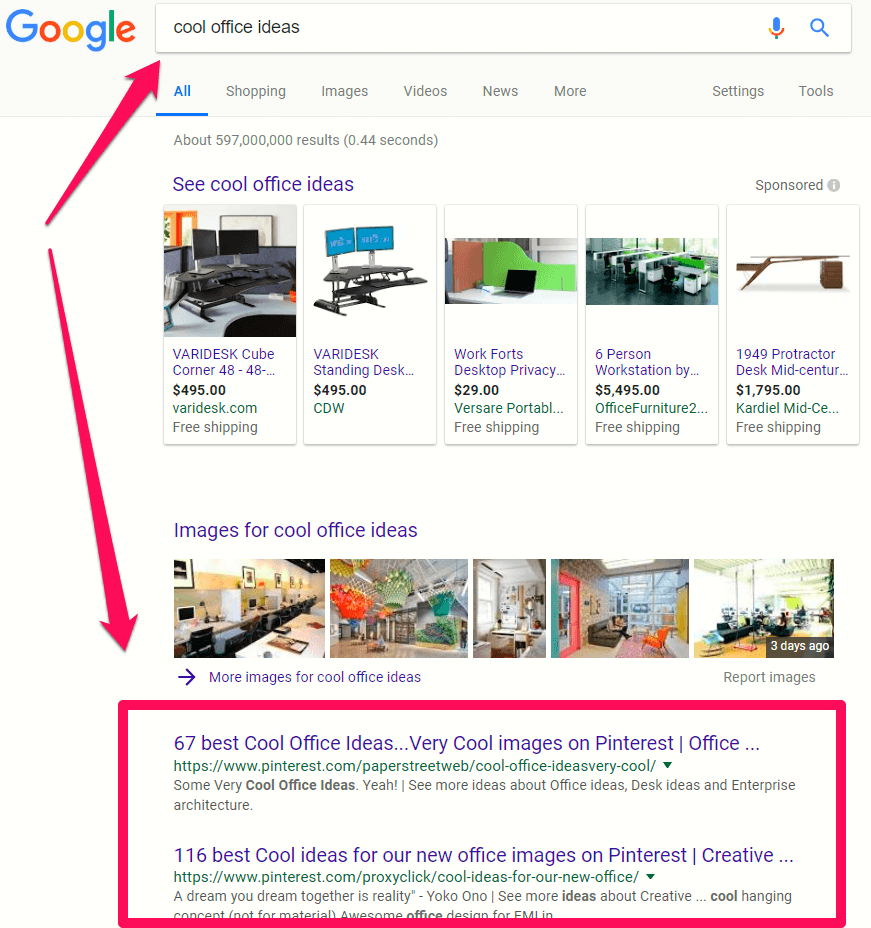
With a Pinterest account you can develop a list of search terms relevant to your product. These search terms are used by customers during the buyer’s journey (from discovery to high purchase intent).
Then you can build Pinterest boards around those keywords. And within those boards you can feature interesting content and other pins around your product pins.
For example, in the above search a company selling various office decor could build Pinterest boards around cool office ideas.
This is an awesome Pinterest resource I think you’ll love:
4k Daily Visitors from My Pinterest Rich Pins Strategy
They can try to grab organic traffic and improve visibility to new products.
And it definitely generates revenue as well; Shopify users referred by Pinterest spend an average of $80 compared to the Facebook referral average of $40.
13. Write Guest Posts
Gain more exposure by creating and posting content on other sites. Sharing valuable, expert content within your niche gives you exposure to a targeted audience.
They’re more likely to follow you compared to marketing that targets average customers. So create a list of relevant sites and blogs and generate some topics to pitch to the editor.
You can either pitch through direct contact or via the sites guest post submission form.
And the most important point to consider is don’t sell your products. While that’s the ultimate goal, no site will take guest content that’s promotional.
Check out these posts for a complete guest blogging strategy:
Guest Blogging for SEO: How to Build High-quality Links at Scale
Guest Blogging: The Definitive Guide (2018)
Instead pitch topics that are informative, entertaining, and educational. Anything that provides value to the site’s audience.
Depending on the submission guidelines for the site you may be able to mention your product within the post. Sometimes as a call to action, in your byline, or not at all.
If you can’t mention it at all, don’t fret and don’t turn down the opportunity. Content marketing is a smart investment that creates more leads per dollar over paid ads.
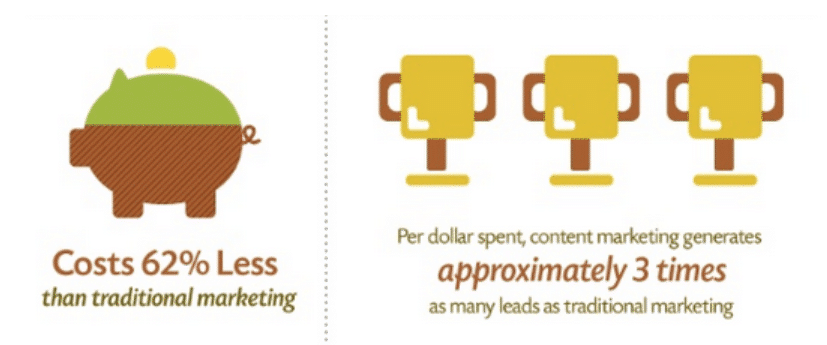
Guest posts are still a terrific means of generating referral traffic as well as backlinks to your site. It will contribute to improving your organic search visibility.
14. Use Eye-Catching Visual Media
Visual media does better than any other kind of content across social media. This makes it the number one type of content you should use to help advertise a product.
In fact, Facebook posts with images see 2.3x more engagement than those without, and Tweets with images receive 150% more retweets.
Avoid stock photos and generic visual content when promoting your product. Instead, get creative and find different ways to leverage eye-catching visuals.

Here are some visual content ideas to add more depth to your posts:
- Use explainer videos and how-to images to show your product and make it stand out from the competition.
- Create detailed infographics packed with value designed around your products features and benefits.
- Get creative with images for eye-catching countdown timers, product updates, and user-generated images featuring your product.
- Produce custom graphics for holidays, events, promotions, contests, and special offers.
15. Use Social Posts to Generate Engagement
The goal of every social post should be to get followers to take action. It can be clicking a link to engaging with the post, making comments and sharing the content, etc.
Encourage your followers to take action by making every social post actionable with open-ended CTAs. The more engagement your posts receive, the more visible they’ll be to the connections of your followers.
This leads to new page likes and greater exposure of your product.
A few ways to boost post engagement include:
- Include a question in your post.
- Reply to all comments.
- Ask your followers to choose between a “this or that” style post.
- Ask followers to weigh in with their opinion on something.
- Post a quiz or poll.
- Share highly valuable curated content relative to your product.
16. Create Product Inserts
If you’re already selling and shipping products you have an opportunity to promote a new product with every sale.
You can send emails to past and current customers to promote a product. But you can also create product inserts to ship with every other product you sell.
And these don’t need to be complex or intricately designed. A simple card ranging in size from a business card to an index card can have a big impact when your customers get a product insert.
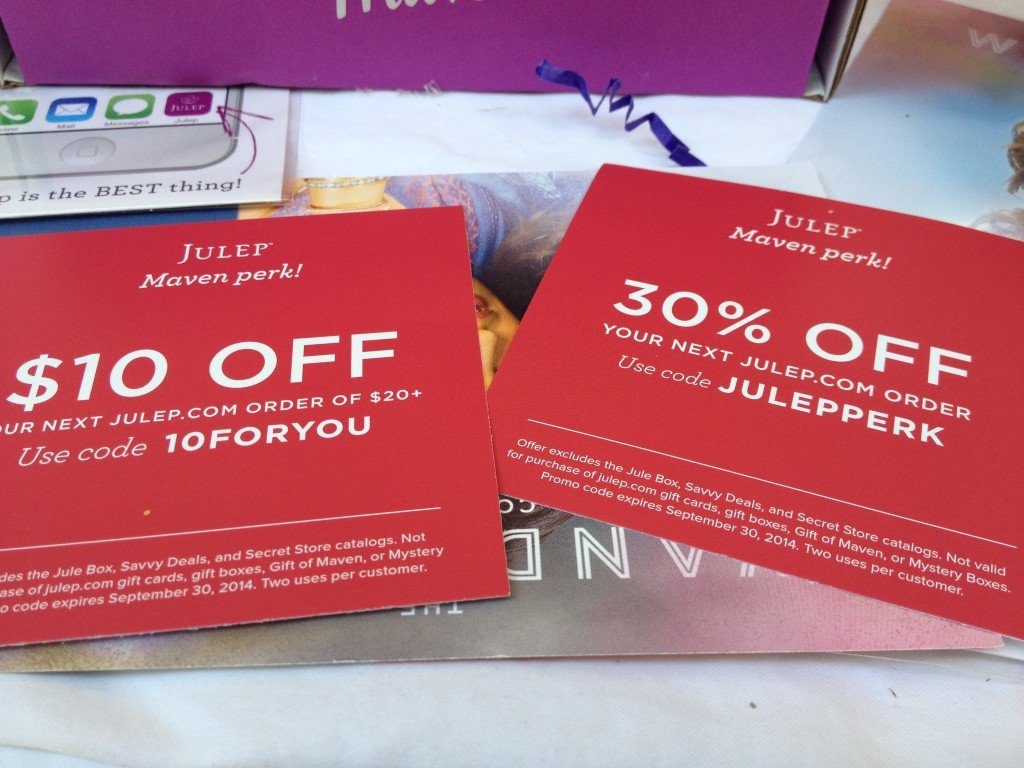
So here are some tips to keep in mind when using product inserts to sell a product:
- Pair the new product promotion with a thank you note so your customer feels appreciated while seeing your new product
- Include a promo code; your customers are more likely to try a new product with a discount offer or a free shipping code. (and you can use the unique code to track the success of the cards)
- Reduce costs with one-sided printing for your product promo and write a quick ‘thank you’ by hand on the blank side
- Use the included shipping receipt and add messaging to promote your new products
- Include a QR code or custom landing page URL to minimize the size of the insert and send them to a page for more info. (and track traffic for campaign effectiveness)
17. Use Product Recommendations
For eCommerce stores you can use the shopping experience for product promotions. And there are a number of opportunities on your site to list a promoted product:
- On your home page as a featured product module or in a rotator/image carouse.
- As a related product on other product page, like Amazon’s “people who bought this also bought”.
- As a recommended product on category pages.
- In the sidebar or call to action of on-site articles/blogs.
- During checkout as a recommended product.
Also you can use popular content to promote your new products. Use Google Analytics to find the most popular content on your site and list your featured product on those pages.
18. Create Gift Guides
Gift guides are great content pieces that can continue to generate organic and referral traffic over time, but only if done right.
So avoid creating generic lists on the fly. And put time into the gift guide and pack it with as much value as you can.
List your featured product that you want to sell and then include a number of other related gifts that fit the theme of the gift guide. (Father’s Day, Christmas, Graduation, etc.)
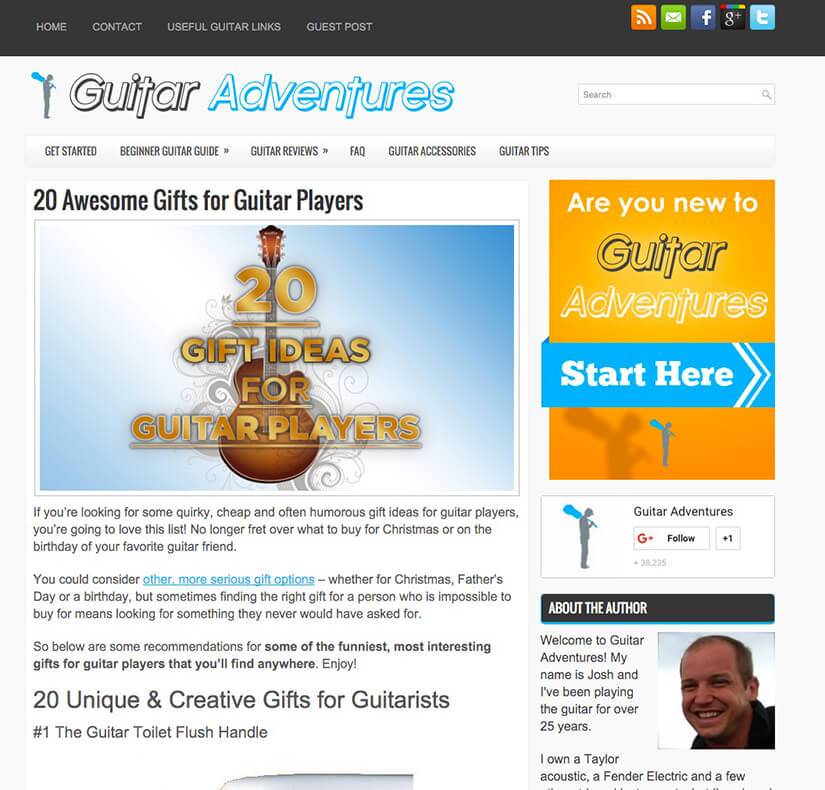
So the more value you put into the list, the more likely it is to see a lot of social shares, links, organic, and referral traffic.
Now don’t mistake ‘value’ to mean more gift ideas. Be sure to include useful information like data from consumer reports on gift ideas.
Also think about where to buy them, accessories, holiday planning ideas, visually-driven guide, and more.
So be sure to create gift guides for multiple occasions; Because the more you create the greater the visibility for your store and your products.
19. Sell with Social Proof
You know how spotting a packed restaurant makes you want to try it out? Because it must be good if that many people are swarming the place, right? That’s the basic concept behind social proof.
And it works the same way when we see a product that carries a ton of reviews. Or when there’s a rush on a product that’s suddenly hard to find in your local stores.
So you can replicate this in eCommerce to help sell product.
One of my favorite apps for this is PROOF, an app with integration for a number of eCommerce platforms including Shopify.
So PROOF automates social proof by creating small non-intrusive notifications on your site. And it shows when someone purchases a product.
And while people shop in your store, the repeated exposure to customers buying a specific product – the one you’re promoting – can drive them to look at the product and make a purchase.
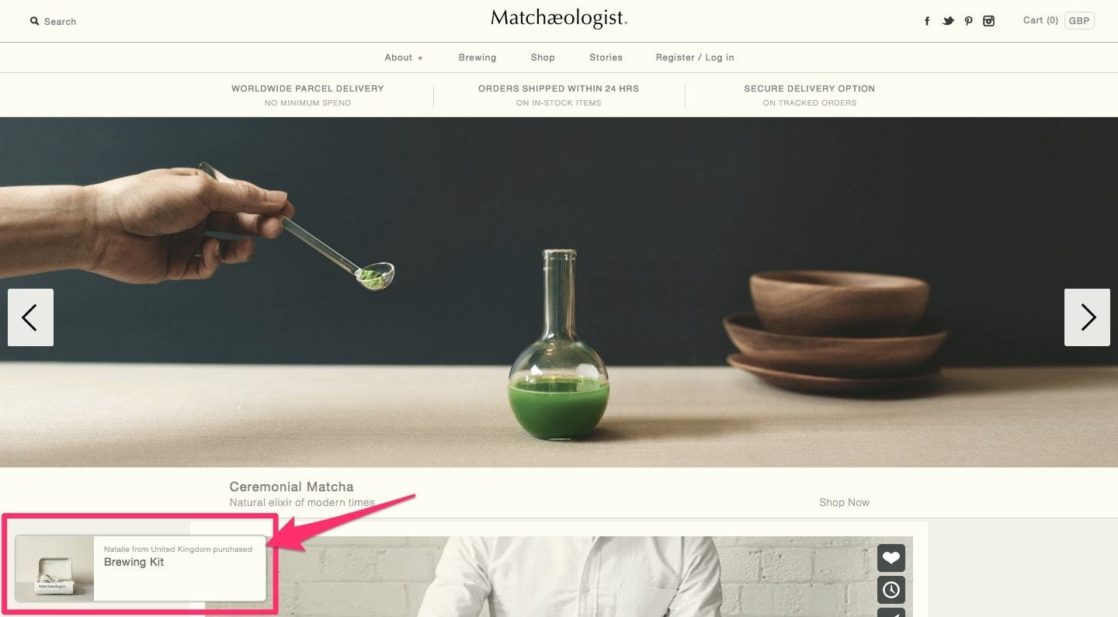
20. Promote and Sell in Multiple Marketplaces
Thanks to a growing shift to omnichannel, you have a lot more options for selling and promoting your products.
So if you have an eCommerce store it’s even easier to launch a multi-channel sales strategy to market a product across different platforms.
But not all marketplaces are created equal, some have very different business models. Like selling on Amazon for example is for private label products. But a site like Etsy is more for handmade and second hand products.
And you’ll need to do some digging to find the places to sell on that align with your products and how you do business.
In the meantime, you can get rolling with mainstream sites – especially if you use a platform like Shopify.
So a number of eCommerce platforms like Shopify have built in integrations for selling on other channels. And they include the most popular sites like Amazon, Facebook, eBay, Lyst, Pinterest, Google Shopping, and more.
So the more places you list and sell your products the more likely it is to be found by your target audience.
Conclusion
So no matter how good your product is, it’s not going to promote itself. And word-of-mouth isn’t always enough.
And if you want to hit your business and revenue goals you’ll need to be proactive and market your business.
Use all the channels and tactics available to you. And using any combination of the tips above you’ll ensure your product gets the maximum amount of exposure without the need for a massive marketing budget.
Tell us below which method is your favorite and which one you’re going to try right away!

Thanks for sharing great thought,
Most of the new entrants in the field of eCommerce achieve their first stage of growth by introducing a few promotional strategies. Some of the top ecommerce product promotion ideas which will help you kick start your journey to the top- https://bit.ly/2GkCvh6
Thanks for sharing information I must say very informative blog post. Keep it up!!
Hey Richard, thanks for checking out the article!
When planning to promote your products to strengthen the sale, you should not limit yourself to the mere discount on the final price, since there are multiple formulas that you can apply in your businesses, especially when it comes to online selling and thanks for sharing these ideal tips here.
Best article